Can you get chlamydia from yeast infection. Chlamydia vs Yeast Infection: Key Differences, Symptoms, and Treatment Options
Can you get chlamydia from a yeast infection. How do the symptoms of chlamydia and yeast infections differ. What are the main treatment options for chlamydia versus yeast infections. How can you prevent chlamydia and yeast infections.
Understanding Chlamydia and Yeast Infections: An Overview
Chlamydia and vaginal yeast infections are two common conditions affecting the female reproductive system, but they have distinct causes, symptoms, and treatments. While both can cause discomfort and concern, it’s crucial to understand their differences to ensure proper diagnosis and treatment.
Chlamydia is a sexually transmitted infection (STI) caused by the bacterium Chlamydia trachomatis. In contrast, vaginal yeast infections, also known as candidiasis, are caused by an overgrowth of the fungus Candida albicans, which naturally exists in the vagina.
Key Differences at a Glance
- Cause: Chlamydia is caused by bacteria, while yeast infections are caused by fungi
- Transmission: Chlamydia is sexually transmitted; yeast infections are not typically considered STIs
- Symptoms: Chlamydia often has mild or no symptoms, while yeast infections typically cause intense itching and discharge
- Treatment: Chlamydia requires antibiotics, whereas yeast infections are treated with antifungal medications
Prevalence and Annual Cases: Chlamydia vs Yeast Infections
Understanding the prevalence of these conditions can help contextualize their impact on public health. Let’s examine the annual number of cases in the United States:

- Chlamydia: Approximately 1,127,651 cases in females annually
- Vaginal yeast infections: An estimated 1,400,000 cases annually
While both conditions affect a significant number of women each year, yeast infections are slightly more common. However, the higher prevalence of yeast infections doesn’t diminish the importance of preventing and treating chlamydia, as it can lead to more serious health complications if left untreated.
Symptoms: How to Distinguish Between Chlamydia and Yeast Infections
Recognizing the symptoms of chlamydia and yeast infections is crucial for seeking appropriate medical care. While there are some similarities, several key differences can help distinguish between the two conditions.
Common Symptoms
Both chlamydia and yeast infections may cause:
- Burning or pain during urination
- Pain during sexual intercourse
- Vaginal discharge
Distinguishing Features
Despite these similarities, there are important differences in symptoms:
Chlamydia-specific symptoms:
- Often asymptomatic or with mild symptoms
- Whitish or colorless, scanty discharge
- Possible bleeding between periods or after intercourse
- Lower abdominal pain (if the infection progresses)
Yeast infection-specific symptoms:
- Intense vaginal itching and irritation
- Thick, white, cottage cheese-like discharge
- Redness and swelling of the vulva
- Rarely causes bleeding or abdominal pain
It’s important to note that while these symptoms can help guide your suspicions, only a healthcare professional can provide a definitive diagnosis.

Diagnostic Procedures: Testing for Chlamydia and Yeast Infections
Accurate diagnosis is crucial for effective treatment of both chlamydia and yeast infections. The testing methods for these conditions differ significantly due to their distinct causes.
Testing for Chlamydia
Chlamydia testing typically involves one of the following methods:
- Nucleic Acid Amplification Tests (NAATs): These are the most sensitive tests for chlamydia. They can be performed on urine samples or swabs from the cervix or vagina.
- Cell culture: This method involves growing the bacteria in a laboratory setting. While accurate, it’s less commonly used due to the time required (up to 7 days) and the availability of faster methods.
Testing for Yeast Infections
Diagnosing a yeast infection usually involves:
- Physical examination: A healthcare provider will examine the affected area for signs of infection.
- Microscopy: A sample of vaginal discharge is examined under a microscope to identify yeast cells.
- pH test: The vaginal pH is tested, as yeast infections typically don’t alter vaginal pH significantly.
- Culture: In cases of recurrent or resistant infections, a culture may be taken to identify the specific strain of yeast.
How long does it take to get test results? For chlamydia, NAAT results are typically available within 1-3 days. Yeast infection diagnoses can often be made during the initial examination, with microscopy results available within minutes.

Treatment Approaches: Managing Chlamydia vs Yeast Infections
The treatment strategies for chlamydia and yeast infections differ significantly due to their distinct causes. Understanding these differences is crucial for effective management of each condition.
Treating Chlamydia
Chlamydia, being a bacterial infection, requires antibiotic treatment. The most common treatments include:
- Azithromycin: A single dose of 1 gram orally
- Doxycycline: 100 mg twice daily for 7 days
It’s crucial to complete the full course of antibiotics, even if symptoms improve. Sexual partners should also be treated to prevent reinfection.
Treating Yeast Infections
Yeast infections, caused by fungi, are treated with antifungal medications. Treatment options include:
- Over-the-counter antifungal creams or suppositories (e.g., miconazole, clotrimazole)
- Prescription oral antifungal medication (e.g., fluconazole)
Treatment duration can range from 1-7 days, depending on the severity of the infection and the specific medication used.

Key Differences in Treatment Approach
- Duration: Chlamydia treatment is typically shorter (1-7 days) compared to some yeast infection treatments which may extend to 14 days for severe cases.
- Partner treatment: Partners must be treated for chlamydia, but this isn’t necessary for yeast infections unless the partner is experiencing symptoms.
- Follow-up: A test of cure is recommended for chlamydia 3-4 weeks after treatment, while this isn’t typically necessary for yeast infections unless symptoms persist.
What should you do if symptoms persist after treatment? If symptoms don’t improve or worsen after completing the prescribed treatment for either condition, it’s essential to consult your healthcare provider. This could indicate antibiotic resistance in the case of chlamydia or a misdiagnosis in either case.
Prevention Strategies: Reducing Risk of Chlamydia and Yeast Infections
While chlamydia and yeast infections have different causes, there are strategies that can help reduce the risk of both conditions. Understanding these preventive measures is key to maintaining optimal sexual and reproductive health.
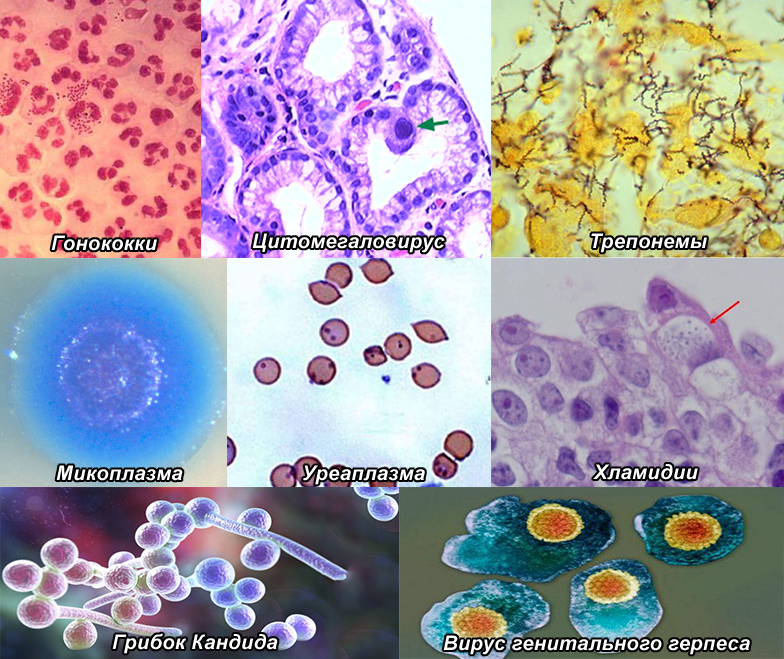
Preventing Chlamydia
As a sexually transmitted infection, chlamydia prevention focuses on safe sexual practices:
- Use condoms consistently and correctly during sexual activity
- Limit the number of sexual partners
- Get regular STI screenings, especially if you have new or multiple partners
- Avoid sexual contact if you or your partner has symptoms or is undergoing treatment for an STI
Preventing Yeast Infections
Yeast infection prevention focuses on maintaining a healthy vaginal environment:
- Avoid douching, which can disrupt the natural balance of bacteria in the vagina
- Wear breathable, cotton underwear
- Avoid tight-fitting clothing, especially in warm weather
- Change out of wet swimsuits or workout clothes promptly
- Maintain good hygiene, but avoid using scented products in the genital area
- Consider probiotics to promote a healthy balance of vaginal bacteria
Shared Prevention Strategies
Some strategies can help prevent both conditions:
- Practice good overall hygiene
- Maintain a healthy diet and lifestyle to support your immune system
- Avoid unnecessary antibiotic use, as this can disrupt the vaginal flora
How effective are these prevention strategies? While no prevention method is 100% effective, consistent use of condoms can significantly reduce the risk of chlamydia transmission. For yeast infections, maintaining good hygiene and a healthy vaginal environment can greatly decrease the likelihood of overgrowth.

Complications and Long-term Effects: Chlamydia vs Yeast Infections
Understanding the potential complications of chlamydia and yeast infections is crucial for emphasizing the importance of prompt treatment and prevention. While both conditions can cause discomfort, their long-term effects differ significantly.
Potential Complications of Untreated Chlamydia
Chlamydia, if left untreated, can lead to serious health problems, particularly in women:
- Pelvic Inflammatory Disease (PID): This can cause chronic pelvic pain and damage to the fallopian tubes
- Infertility: Damage to the reproductive organs can make it difficult or impossible to conceive
- Ectopic pregnancy: Increased risk of pregnancy occurring outside the uterus
- Reactive arthritis: In rare cases, chlamydia can lead to joint inflammation
- Increased risk of HIV transmission: Chlamydia can make it easier to contract or transmit HIV
Potential Complications of Recurrent Yeast Infections
While yeast infections are generally less serious, recurrent infections can lead to:

- Chronic discomfort and reduced quality of life
- Psychological distress and impact on sexual relationships
- Rarely, development of resistant strains of yeast that are harder to treat
Comparing Long-term Effects
The key differences in long-term effects include:
- Severity: Chlamydia complications are generally more severe and can have lasting impacts on reproductive health
- Reversibility: Many complications of chlamydia, such as damage to fallopian tubes, may be irreversible, while the effects of yeast infections are typically reversible with proper treatment
- Systemic impact: Chlamydia can affect multiple body systems, while yeast infections primarily affect the vaginal area
What’s the timeframe for potential complications to develop? For chlamydia, PID can develop within days to weeks of infection. Infertility may occur over months to years if the infection is left untreated. Yeast infection complications typically only occur with recurrent or chronic infections over an extended period.

Myths and Misconceptions: Clearing the Air About Chlamydia and Yeast Infections
Misinformation about chlamydia and yeast infections can lead to delayed treatment, unnecessary anxiety, or inappropriate self-treatment. Let’s address some common myths and provide accurate information.
Myth 1: You can get chlamydia from a yeast infection
Fact: Chlamydia and yeast infections are caused by different organisms and are not directly related. You cannot contract chlamydia from a yeast infection or vice versa. Chlamydia is a sexually transmitted infection, while yeast infections are typically not considered STIs.
Myth 2: Only sexually active people get yeast infections
Fact: While sexual activity can sometimes trigger a yeast infection, it’s not the only cause. Factors like antibiotic use, hormonal changes, and certain medical conditions can also lead to yeast overgrowth. Even people who are not sexually active can develop yeast infections.
Myth 3: Chlamydia always causes noticeable symptoms
Fact: Many people with chlamydia don’t experience any symptoms. This is why regular STI screenings are important for sexually active individuals, especially those with new or multiple partners.
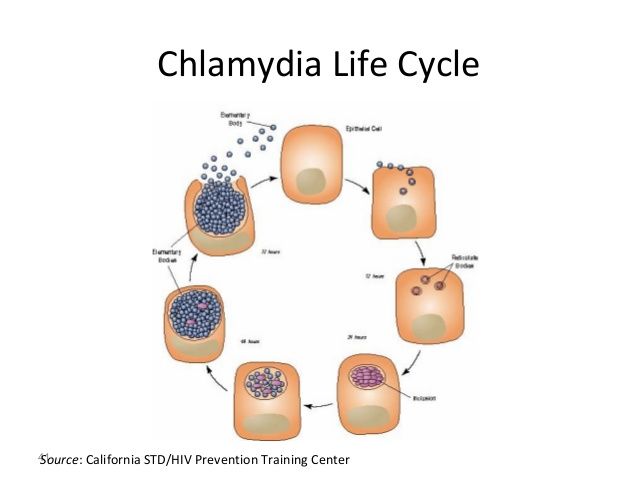
Myth 4: You can treat chlamydia with over-the-counter yeast infection medications
Fact: Chlamydia requires prescription antibiotics for treatment. Over-the-counter antifungal treatments for yeast infections will not cure chlamydia. Using the wrong treatment can delay proper care and potentially lead to complications.
Myth 5: Once you’ve had a yeast infection, you’re immune to future infections
Fact: Having a yeast infection doesn’t provide immunity against future infections. Many women experience recurrent yeast infections throughout their lives.
Myth 6: Men can’t get yeast infections
Fact: While less common, men can develop yeast infections, particularly on the penis. This is more likely in men who are uncircumcised or have weakened immune systems.
How can you distinguish between facts and myths about these conditions? Always consult reputable health sources or healthcare professionals for accurate information. Be wary of anecdotal evidence or claims that seem too good to be true. Remember, proper diagnosis and treatment by a healthcare provider is crucial for both chlamydia and yeast infections.

Comparing Chlamydia to Vaginal Yeast Infection
X
- What you feel?(symptoms)
- What you see?
- Odds of getting it
- Testing
- Testing algorithm
- Treatment
- Treatment algoritm
- Chlamydia vs. other diseases
- Chlamydia vs. gonorrhea
- Chlamydia vs. bacterial vaginosis
- Chlamydia vs. vaginal yeast
- Protecting
- Myths
Here we compare chlamydia and vaginal yeast infection. Vaginal yeast, unlike chlamydia, is not considered a sexually transmitted disease. It affects only females and can be induced by sex but not transmitted by a sex partner. Sexual activity can change the pH of the vagina and induce yeast symptoms. Other common things that can lead to yeast are low immunity and pregnancy. Yeast is linked to an imbalance of “good” and “harmful” bacteria normally found in the vagina. Yeast can increase the chance of getting an STD.
Annual number of cases
| Annual number of cases in the US | |
|---|---|
| Chlamydia | 1,127,651 (females) |
| Vaginal yeast infection | 1,400,000 |
Signs and symptoms: differences and similarities
| Similarities | Differences |
|---|---|
| Vaginal itch
Discharge color and amount
Vaginal redness and irritation
Vaginal bleeding with intercourse and between periods
Abdominal pain
|
Photographic comparison
In the images below, pay attention to these factors:
- color, consistency and amount of discharge
- irritation and swelling of the vagina opening
Chlamydia
Image source: https://slideplayer. com/slide/9870916/
com/slide/9870916/
Vaginal yeast infection
Image source: Health Canada, Sexual Health and STI Section, Clinical Slide Gallery
Same day treatment and testing
See a doctor in person See a doctor via telemedicine
Frequently Asked Questions
Here we summarize real patients’ questions, grouped by topic, and Dr. Fuzayloff’s answers to them. “Dr. F” (his patients’ name for him) has been an STD doctor for over two decades in Midtown Manhattan, NYC.
I am a 35-year-old female and I have itching and burning around the vaginal opening after sex. Is it yeast or chlamydia?
It’s challenging to answer this question without more information, since both conditions can cause those symptoms. Yeast infection is vaginitis and there’s a greater chance of those symptoms with yeast infection, but other factors need to be considered to make the correct assumption:
Any recent use of antibiotics?
If so, yeast is more likely.
Any recent sexual contact?
Yeast infection can be induced by a change in pH after having sex, especially if you’re not routinely sexually active.

How long after sexual contact did signs and symptoms develop?
With yeast infection, they occur within a day or two after activity. Chlamydia has a longer incubation period than yeast (3 weeks on average) and symptoms might appear later.
Any discharge?
Yeast infection, unlike chlamydia, can create a significant amount of whitish, cottage cheese–like discharge. (This consistency is specific to yeast.)
The list goes on and on.
In the table below, we summarize the most important differences between yeast and chlamydia at a glance after sexual contact.
Yeast Chlamydia Lower abdominal pain A “fishy” odor from the vagina (especially after sexual intercourse) Bleeding between periods Pain during sex Bleeding during sex Scanty, clear discharge Thin, whitish discharge New partner or unprotected sex New partner or unprotected sex New partner or unprotected sex Next day 3 weeks
Select other section
Yeast Infection vs Chlamydia: Similarities, Differences, Treatments
Yeast infection vs chlamydia – what are the differences and similarities between the two conditions?
These conditions can sometimes get mixed up.:max_bytes(150000):strip_icc()/yeast-infections-treatment-3521199-1b83976b404641398aa11374314acd26.jpg) Although they both affect your sexual health, knowing how to differentiate is crucial. This is because it shapes the treatment method, period, and also tips to avoid these infections in the first place.
Although they both affect your sexual health, knowing how to differentiate is crucial. This is because it shapes the treatment method, period, and also tips to avoid these infections in the first place.
Yeast infection vs chlamydia – what are the differences and similarities between the two conditions?
These conditions can sometimes get mixed up. Although they both affect your sexual health, knowing how to differentiate is crucial. This is because it shapes the treatment method, period, and also tips to avoid these infections in the first place.
What is a Yeast Infection?
Yeast infections come in different forms. However, when we highlight a healthy sex life devoid of unusual clumpy vaginal discharge or irritation. The primary yeast infection to consider is vaginal candidiasis, also known as a vaginal yeast infection.
Commonly experienced by more than 2/3 of women worldwide, vaginal yeast infections can be classified as a minor health problem that can easily be treated. However, before diving into some beneficial information on yeast infections, we’ll consider the other side of this article.
However, before diving into some beneficial information on yeast infections, we’ll consider the other side of this article.
What is Chlamydia?
Chlamydia is among the most prevalent sexually transmitted diseases reported in men and women. In women, however, chlamydia can threaten the reproductive system if it’s not treated.
Untreated chlamydia can lead to a pelvic inflammatory disease that can cause long-term abdominal pain. However, it doesn’t lead to cancer like HPV (human papillomavirus, a member of the virus family causing genital warts). Women are seriously affected by infections like chlamydia and bacterial vaginosis more as they are among the highest risk factors for infertility.
Yeast Infection vs Chlamydia
Because yeast infection symptoms are similar to those of chlamydia and bacterial vaginosis, they can be easily confused.
One of the most significant differences between yeast infection and chlamydia is their spread. Candida overgrowth causes vaginal candidiasis, while chlamydia is among the most commonly reported sexually transmitted infections. The two also have different symptoms. They differ in the vaginal discharge they cause, the itchiness level they create, and come with other various symptoms interchangeably.
The two also have different symptoms. They differ in the vaginal discharge they cause, the itchiness level they create, and come with other various symptoms interchangeably.
Chlamydia and Yeast Infection: How Do You Get Infected?
While yeast infections result from the unbalanced ph levels of our body, you don’t “get” one from anywhere. Instead, vaginal candidiasis occurs due to leading a life with poor hygiene and overuse of antibiotics that mess up your metabolism, while chlamydia is mainly transmitted sexually.
Having multiple partners for those who are sexually active puts one at higher risk of getting chlamydia. Alternatively, if you had chlamydia in the past, it can recur even if you have undergone successful treatment.
Yeast Infection vs Chlamydia Symptoms
Symptoms of chlamydia and yeast infections have some differences in between. Although similar to a urinary tract infection, they both cause pain when having sex and a burning sensation during urination. Symptoms of yeast infection vs chlamydia mainly differ regarding the vaginal discharge they create.
Symptoms of yeast infection vs chlamydia mainly differ regarding the vaginal discharge they create.
While chlamydia causes a scanty discharge that is either colorless or whitish, vaginal candidiasis creates a clumpy, white, and abundant discharge. And although they both cause itchiness around the vaginal area, chlamydia causes minimal to no itchiness, while vaginal candidiasis comes with a level of irritation.
Symptoms of Chlamydia Differing from Vaginal Candidiasis
Some symptoms of chlamydia differ from the symptoms of vaginal candidiasis. These can be listed as:
- Risk of bleeding during intercourse
- Developing into PID (pelvic inflammatory disease)
Treatment for Vaginal Candidiasis and Chlamydia
Chlamydia is treated with antibiotics, while vaginal candidiasis requires antifungal treatment. Unlike genital herpes, which requires copious amounts of rest, taking good care of yourself, and refraining from spreading the disease by reducing sexual contact and surfaces you come into contact with.
Chlamydia is commonly treated with antibiotics azithromycin or doxycycline. To treat chlamydia, you can also be prescribed one of the other common alternatives like ofloxacin, levofloxacin, or erythromycin.
vaginal candidiasis treatment, on the other hand, requires antifungal medication. Therefore, vaginal candidiasis is usually treated with antifungals such as Fluconazole or Miconazole.
Diagnosis for Yeast Infection vs Chlamydia
To get diagnosed with vaginal candidiasis or chlamydia, you must showcase the specific symptoms that suit these conditions.
Looking at them individually, vaginal candidiasis and chlamydia have crucial differing symptoms that help professionals diagnose you properly. Proper diagnosis is vital to get the appropriate treatment and be prescribed the correct medication. So here’s a “do I have vaginal candidiasis or std quiz.”
The main difference to check for is the discharge. Do you have a discharge with an unpleasant odor and a green color? Do you rarely see it coming off, rather than regularly and abundantly? If yes, then you might have chlamydia and not vaginal candidiasis.
On the other hand, if your discharge has a cottage cheese-like texture and is white and thick, you might have vaginal candidiasis and not chlamydia. Chlamydia does not cause a discharge with the listed characteristics.
Can Condoms Protect Against Vaginal Candidiasis and Chlamydia?
Condoms can not guarantee protection against vaginal candidiasis as yeast infections are caused by imbalanced ph levels in your body. However, as a condom is a protective measurement against STIs, it can protect you from contracting chlamydia.
Condoms are typically 98% effective in preventing an STI; chlamydia remains one of the easiest ones to avoid.
Can You Have Chlamydia and Yeast Infection At The Same Time?
Yes. Because chlamydia and vaginal candidiasis are transmitted in different ways. Chlamydia is an STI, and vaginal candidiasis can be caused by lifestyle and nutritional choices. Therefore, you can have vaginal candidiasis and chlamydia simultaneously.
Make sure you get tested and promptly start the proper treatment to prevent each worsening.
After diagnosis and getting the proper treatment for your specific needs and lifestyle, you will want to know if the treatment you went through actually worked for you.
Understanding whether your vaginal candidiasis or chlamydia treatment will need different approaches. Here’s what to check for to see if your chlamydia or vaginal candidiasis has healed.
Signs Your Chlamydia is Healing
Chlamydia is quick to respond to the proper treatment. You should be able to see an immediate improvement in your condition if you start receiving treatment.
These signs can be listed as:
- Pain or discharge is seen when urinating decreases
- Bleeding outside of your periods or getting heavier periods will lessen in number
- For men, pelvic pain or testicular pain will diminish. This pain can take up to two weeks to get resolved entirely.
Signs Your vaginal candidiasis is Clearing
A mild yeast overgrowth infection can go away on its own. But if you are going through an episode that can be classified as moderate or severe, you might need medical attention.
But if you are going through an episode that can be classified as moderate or severe, you might need medical attention.
If you have started treating your infection and want to be able to tell if there is any improvement, here are things you can see when your vaginal candidiasis is clearing:
- Your vaginal discharge goes back to normal (it’s not clumpy and white anymore),
- Itchiness around the vaginal area will subside,
- Redness, irritation, and inflammation will clear out.
How Long Does It Take To Treat Vaginal Candidiasis and Chlamydia?
The amount of time it takes to treat vaginal candidiasis and chlamydia is different. Depending on the success of the treatment you are getting or the severity of your condition, how long vaginal candidiasis or chlamydia lasts can vary.
For vaginal candidiasis, if your condition is mild, it can go away on its own without treatment in as little as three days. However, suppose it needs to be taken more seriously and classified as moderate to severe.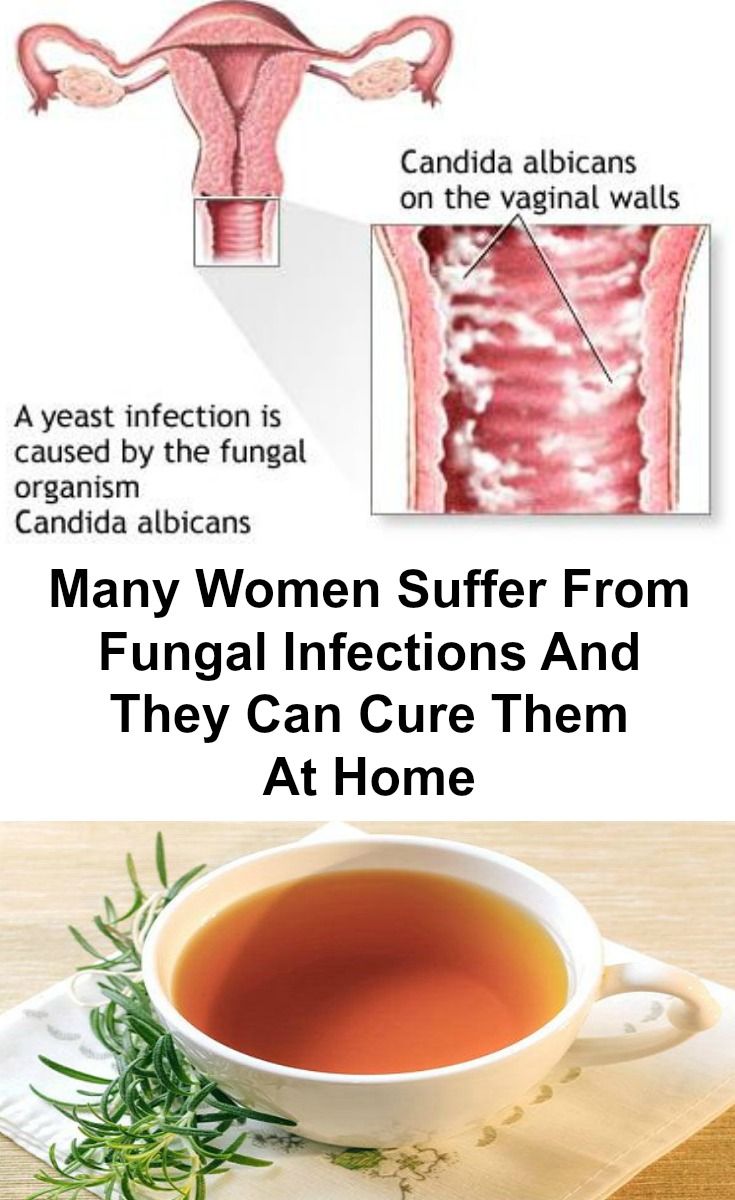 In that case, vaginal candidiasis can take one to two weeks to get cured with the proper treatment.
In that case, vaginal candidiasis can take one to two weeks to get cured with the proper treatment.
If appropriately treated, chlamydia, however, goes away in two weeks. Antibiotics are crucial when treating chlamydia while also practicing abstinence during the treatment, not passing it to your sexual partners, or putting yourself at risk of being reinfected.
Can You Treat Vaginal Candidiasis and Chlamydia At Home?
You can treat candidiasis at home. Home remedies for vaginal candidiasis come in different shapes and sizes. At-home treatments for candidiasis rarely align with what doctors advise you to seek as treatment.
Still, suppose your condition is not severe, and you want to try solutions that might work without getting the opinion of a medical expert. In that case, there are remedies that you can try out.
Here are at-home remedies for treating vaginal candidiasis:
- Probiotics (eating yogurt or applying it directly to your vagina),
- Tea tree oil (diluting it with coconut oil and inserting it into the vaginal area via a suppository applicator),
- Boric acid (diluting it with water and inserting it into the vaginal area through a suppository applicator- not recommended during pregnancy).

Chlamydia, though? No. Chlamydia can’t be cured with at-home remedies.
Chlamydia needs medical treatment, and the best way to get treated for chlamydia is to get diagnosed by a doctor first. If an STI is untreated, it can cause significant health problems, and it’s never recommended to lead a life ignoring such severe conditions. Check-in with a medical professional to be put on the proper medication if you have chlamydia and need to be treated for it.
Are There At Home Kits To Test For Vaginal Candidiasis or Chlamydia?
There are no at-home test kits to check for vaginal candidiasis, unlike bacterial vaginosis, but there are kits that can test your ph levels. As candidiasis breeds from the imbalance of the pH levels of yeast that are already there in your body, it can give you an idea of if you have the infection or not. But there is no home kit to test and confirm if you have vaginal candidiasis.
On the other hand, home kits can test if you have chlamydia.
Because it can be uncomfortable for some people to be open about STIs. Home test kits are available for those who want to get tested discreetly and in the comfort of their homes. There are many online options where you get your result by sending in a sample of your urine to the test kit provider, and they take up to 5 to 7 days to send you your results.
What is The Best Medication for Treating Vaginal Candidiasis and Chlamydia?
Chlamydia treatment is usually done with commonly used drugs like:
- Azithromycin,
- Doxycycline
- Ofloxacin,
- Levofloxacin,
- Erythromycin.
Vaginal candidiasis can be treated with various drugs. The most used treatment for it is the seven-day treatment pill Miconazole and the generic prescription pill Fluconazole.
Fluconazole is prescribed to be taken once. It can be repeated for the 2nd time if symptoms don’t improve after two days.
There are one-and-done or quick-fix treatment solutions for vaginal candidiasis. Still, proper treatment commonly takes a minimum of 3 days.
Still, proper treatment commonly takes a minimum of 3 days.
No matter the research you do at home, it’s always best to get the opinion of a medical professional before self-diagnosis. Make sure you don’t start using the medication without being sure if it’s the one that will suit your needs, your health condition, and your lifestyle.
When To See a Healthcare Provider?
If none of the symptoms listed can help you determine if you have bacterial vaginosis or an STI like chlamydia, you should see a doctor.
And even if you precisely find out what you have, the treatment methods don’t help you see any improvement in your health. For example, suppose you are experiencing allergic reactions to the treatment you opted for. In that case, you should get checked and get the proper treatment for your health condition.
Get Professional Help With Doctor Alexa
Getting expert help can be life-changing if your condition doesn’t seem to get better with following online information.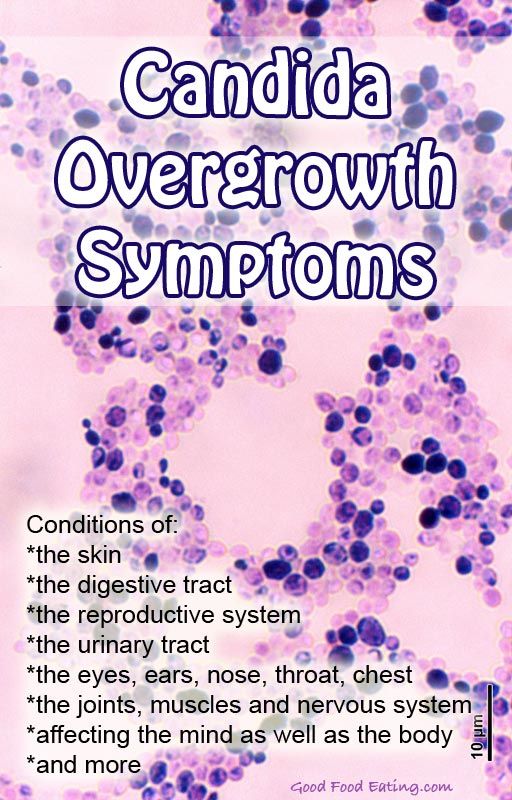 You might require the opinion of a healthcare expert.
You might require the opinion of a healthcare expert.
At DrAlexa, we let you completely control your health and provide stress-free ways to access healthcare services from the comfort of your home. We aim to provide affordable, world-class healthcare services and excellent patient experiences because you deserve nothing less.
Reach out to DrAlexa today to learn more about every wonderful thing we have to offer you.
Latent infections. Chlamydia, ureaplasmosis, mycaplasmosis and candida in men | Online Clinic
You will love being healthy!
09/17/2018
Chlamydia, ureaplasmosis, mycaplasmosis and candida in men are the so-called “hidden” sexual infections, because a man may not observe any symptoms for a long time. About how to identify and treat such diseases, we asked the urologist-andrologist Abrosov Denis Andreevich.
Denis Andreevich, what is the danger of latent infections? How can they be infected? Is it possible in a domestic way or not? In men, these infections are most often asymptomatic, and men believe that they do not need to be treated.
they are mistakenly considered a purely female disease, and men pay less attention to them, they believe that this is not so significant. In fact, the same Candida albicans and faecalis cause constant irritation of the urethra and discomfort. Although it is not typical for a man to be a carrier of flora and thrush containing a fungal infection, when thrush and bacterial vaginosis are introduced from a woman, this leads to a constant chronic inflammatory process. And, most often, thrush doesn’t “stick” to a man just like that, but if there is some kind of disease like chlamydia, ureaplasma or mycoplasma, then against the background of these infections, the fungal infection becomes pronounced. That is why they are called latent infections, since they do not have obvious symptoms. A man can feel only a slight pinching inside the urethra, decreased erection, slight anxiety-discomfort in the prostate area. But what does this lead to? A focus of internal constant inflammation appears in the body. This leads not only to a decrease in immunity, mood, male strength, but also to constant depression, since all the forces of the body are aimed at constantly fighting the inflammatory process, and there is no strength left for anything else.
This leads not only to a decrease in immunity, mood, male strength, but also to constant depression, since all the forces of the body are aimed at constantly fighting the inflammatory process, and there is no strength left for anything else.
First of all, this leads to a decrease in all the main hormones of the sexual sphere, which are important for procreation. Testosterone drops and the man simply does not have an internal reserve for accomplishments. The longer a man is sick, the same chlamydia, the more likely the male factor of infertility.
They say that the same chlamydia leads to the formation of so-called “films” (salpingitis), is it dangerous only for women and leads to obstruction of the fallopian tubes, or is it also dangerous for men?
This disease is dangerous for the reproductive system of both partners. The patency of the seminal canals decreases, the quantitative and qualitative indicators of spermatozoa deteriorate. There are fewer progressively mobile, more weakly mobile or completely immobile spermatozoa; with severe morphological defects of the head, neck and tail, DNA fragmentation increases.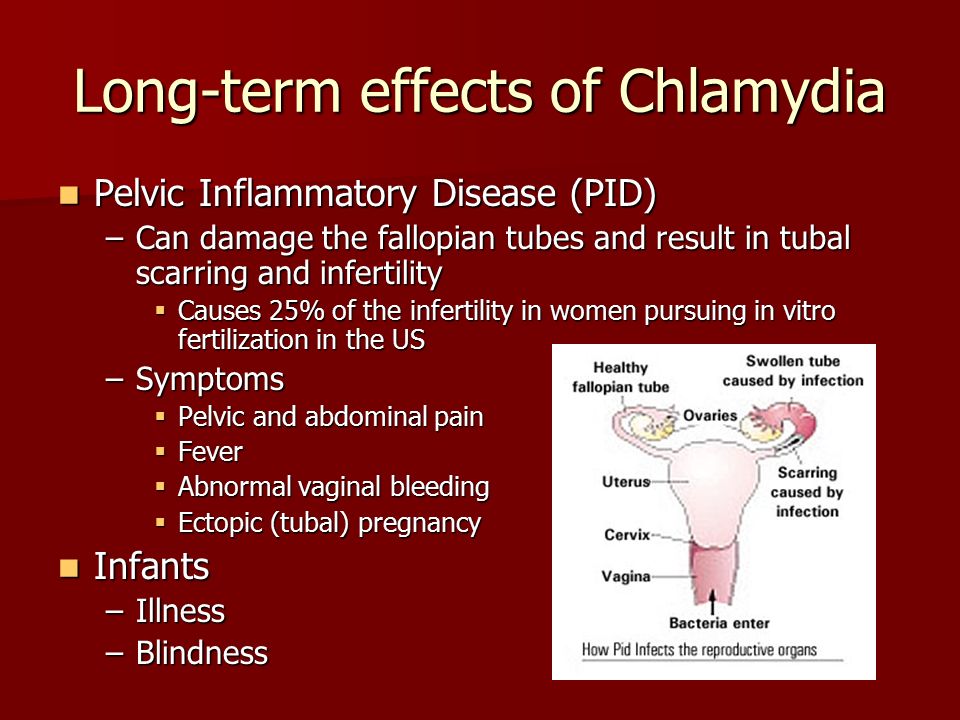 Such spermatozoa do not move, but only twitch a little in place. This has not yet been proven, but now many researchers have begun to associate the cause of missed pregnancies with precisely such pathologies. For example, it has been observed that chlamydia DNA can “embed” into human DNA. In immobile spermatozoa, the percentage of genetic defects is higher, and this increases the risk of male factor infertility, missed pregnancies up to 10 weeks and, accordingly, the risk for women and the fetus. If a couple has untreated latent infections, it is more likely that a predisposition to the parents’ chronic diseases will be passed on to the child. Therefore, when planning a pregnancy, it is very important not to forget that the sperm renewal cycle is 72 days. If HPV or herpes are detected during planning, it is not enough just to lower the titer, you need to wait until the percentage of defective spermatozoa in the spermogram decreases and the system is completely updated. In the prostate, under the influence of chlamydia, entire lagoons-foci of infections are created, these foci are clearly visible during examination, since the infection lives, feeds, and excretes waste products.
Such spermatozoa do not move, but only twitch a little in place. This has not yet been proven, but now many researchers have begun to associate the cause of missed pregnancies with precisely such pathologies. For example, it has been observed that chlamydia DNA can “embed” into human DNA. In immobile spermatozoa, the percentage of genetic defects is higher, and this increases the risk of male factor infertility, missed pregnancies up to 10 weeks and, accordingly, the risk for women and the fetus. If a couple has untreated latent infections, it is more likely that a predisposition to the parents’ chronic diseases will be passed on to the child. Therefore, when planning a pregnancy, it is very important not to forget that the sperm renewal cycle is 72 days. If HPV or herpes are detected during planning, it is not enough just to lower the titer, you need to wait until the percentage of defective spermatozoa in the spermogram decreases and the system is completely updated. In the prostate, under the influence of chlamydia, entire lagoons-foci of infections are created, these foci are clearly visible during examination, since the infection lives, feeds, and excretes waste products. This is a constant risk of intoxication in both the bladder and the prostate. If the infection rises, it gives complications to the kidneys. Chlamydia can cause inflammation even in the connective tissues of the joints. Men may develop chronic pain, arthritis. Very often, patients come and complain about related problems – crunching and aching joints.
This is a constant risk of intoxication in both the bladder and the prostate. If the infection rises, it gives complications to the kidneys. Chlamydia can cause inflammation even in the connective tissues of the joints. Men may develop chronic pain, arthritis. Very often, patients come and complain about related problems – crunching and aching joints.
There is also chlamydia and ureaplasmosis of the eyes – these are constantly “flowing” eyes, sticking with pus in the morning. Inflammation can go to all mucous tissues of a person. For example, patients complain of a concomitant persistent cough. It turns out that if a man is sick and not treated, even when using barrier methods of contraception, if there is oral sex, a girl can infect her tonsils, then when kissing, this is transferred to a man and he gets infected, and this can already lead to pharyngitis, gingivitis and etc.
An important question that is often discussed on women’s forums on the Internet. Are these infections transmitted through the household? The network writes that ureaplasmosis “lives” up to 5 days outside the mucosa.
This is more of a fairy tale, of course. Although there are very rare exceptions to every rule. It is believed that it is possible to become infected through shared towels, a bathroom, a dubious public bath and sauna, in which sexual intercourse of carriers of the infection has recently occurred. But this is all extremely conditional, and is rare. For infection, immunity must be greatly reduced, there must be open wounds on the mucous membrane. The main route of infection, after all, is through sexual contact. In a clean home bathroom with a good hostess, this is almost impossible.
Another question is one of the first to come up with queries on websites. If we talk about fungal infections, then circumcision in this case helps for prevention?
If a man does not observe hygiene or is in conditions in which daily water procedures are difficult, then circumcision helps. Maybe in hot eastern countries this is true. But if a man daily and so opens the foreskin during ablution, then there is no point in circumcision.![]() At the same time, due to circumcision, the sensitivity of the glans penis decreases over time, and this then leads to other problems.
At the same time, due to circumcision, the sensitivity of the glans penis decreases over time, and this then leads to other problems.
Is it possible to get chlamydia from animals (cats)?
In this case, the same principles apply as in the case of infection by the household route. There are, of course, exceptions to the rule and circumstances. A pronounced acute form of the disease in an animal, in which, for example, pus is released from the eyes, reduced immunity in the host, open wounds on the mucous membrane. But if the cat is vaccinated, does not walk on the street, does not have contact with sick animals, infection is extremely unlikely. So, when couples planning pregnancy throw away their pets, they do it in vain.
So: in order for an unfortunate accident and infection through everyday life to occur, what conditions must coincide?
The patient must have severely reduced immunity, for example, other chronic infections are present; Chronic diseases, for example, herpes, the RVI virus, an overloaded liver (there was hepatitis), or he is in a state of constant severe stress, when all indicators, including testosterone, are greatly reduced.
Is there a seasonality in sexually transmitted diseases?
Of course, there is a slight seasonality. But it also depends on the age of the patients. Most often, exacerbations occur in the spring and in the autumn-winter period, which, of course, is associated with a general decrease in immunity, hypothermia or overheating of the prostate in cars during unsettled weather or cold weather. Sudden changes in temperature – stress for the body, which leads to an exacerbation of latent infections. In the spring, hormones play, more opportunities for unplanned sex. In September-October, there is a surge after the holidays, students return en masse to the city and check in after their summer holidays. In January, after New Year’s corporate parties and holidays and the ancient tradition of going to the bathhouse. After February 23, and generally after the holidays, there is a risk of getting an infection.
What is the incubation period for latent STDs?
Most infections such as chlamydia within 5-7 days. A week has passed since unprotected intercourse – you can and should go for tests. Latent asymptomatic forms can hide in the body for decades. A man and a woman with a strong immune system after unprotected intercourse can become infected, but symptoms may not appear for a long time. And an exacerbation can occur just after overheating in the bath and drinking alcohol and a general decrease in immunity. There are patients who do not find symptoms for many years, and then come to be examined before pregnancy and are surprised by the results of the tests. Sometimes it comes to family dramas. If a man has a good strong immune system, he can easily live with some types of STDs, the same chlamydia and ureaplasma. But, nevertheless, he can pass the infection to his partner.
A week has passed since unprotected intercourse – you can and should go for tests. Latent asymptomatic forms can hide in the body for decades. A man and a woman with a strong immune system after unprotected intercourse can become infected, but symptoms may not appear for a long time. And an exacerbation can occur just after overheating in the bath and drinking alcohol and a general decrease in immunity. There are patients who do not find symptoms for many years, and then come to be examined before pregnancy and are surprised by the results of the tests. Sometimes it comes to family dramas. If a man has a good strong immune system, he can easily live with some types of STDs, the same chlamydia and ureaplasma. But, nevertheless, he can pass the infection to his partner.
About Mycoplasma and ureaplasma they say that their small amount in the human body is the norm, is it true?
This is true to some extent, only for women. Men should not have any alien microflora. If they have it, the man is sick. Most often it happens like this: a patient comes and says that once upon a time there was unprotected intercourse, but there were no symptoms right away, and recently he went to the sauna, drank beer or had a cold in the prostate, and he developed symptoms. He thinks that he picked it up somewhere recently in a domestic way. He passes tests, does an ultrasound, and it turns out that the person fell ill for a long time, and with the latest events he only provoked an exacerbation.
Most often it happens like this: a patient comes and says that once upon a time there was unprotected intercourse, but there were no symptoms right away, and recently he went to the sauna, drank beer or had a cold in the prostate, and he developed symptoms. He thinks that he picked it up somewhere recently in a domestic way. He passes tests, does an ultrasound, and it turns out that the person fell ill for a long time, and with the latest events he only provoked an exacerbation.
Testing for men is a painful procedure, is there a painless alternative?
There is an alternative. Urethral swabs are an unpleasant procedure, but not fatal. Previously, the biomaterial was taken with a long metal probe, sometimes with silver, after which the soreness and burning sensation persisted for several days. Now the situation is different. And, since men are most often afraid to take even smears for infections, more comfortable diagnostic methods have appeared for them. It is enough to pass the very first morning portion of urine for PCR analysis. Without pain and discomfort. Now the question of revealing latent infections is only in the desire to be healthy. It is not so difficult to collect a morning portion of urine in a container, and you can bring it to the clinic on your way to work.
Without pain and discomfort. Now the question of revealing latent infections is only in the desire to be healthy. It is not so difficult to collect a morning portion of urine in a container, and you can bring it to the clinic on your way to work.
How to prepare for sampling to ensure that infections are detected, if any?
No serious preparation is needed. Previously, it was advised to drink beer the day before to provoke the process. But now it has been proven that this is not necessary. It is enough if there was sexual abstinence on the eve of the study, and if PCR is given by urine analysis, then this should be the very first morning portion. Morning hygiene should also be excluded. The most important thing is not to drink any antibiotics and anti-inflammatory drugs for the next two weeks before the study. Even Nice can blur the picture. As well as low-quality chicken with a high content of antibiotics in the feed. I had cases that a man on the eve of the study drank alcohol with garlic, ginger and pepper and received a false negative result. I summarize: before the study, you need to exclude products containing antibiotics and GMOs for 10 days, exclude immunostimulants, alcohol, refrain from sex on the eve of the study and pass the first portion of urine for PCR or come for a smear from the urethra.
I summarize: before the study, you need to exclude products containing antibiotics and GMOs for 10 days, exclude immunostimulants, alcohol, refrain from sex on the eve of the study and pass the first portion of urine for PCR or come for a smear from the urethra.
And most importantly, at the first sign, and preferably almost immediately after unprotected sex, contact a doctor you trust to make a competent diagnosis and prescribe adequate treatment. Do not diagnose yourself on your own and on the advice of forums and friends. Stop hoping for a chance and a magic pill. Only a doctor can choose the right dosage and combination of drugs for you, send you to a day hospital, droppers and ILBI, or choose the frequency and intensity of physiotherapy. Moreover, new effective methods have appeared: ultrasound, magnets, BTL shock wave therapy.
We have already talked about these methods before (read on), but I will remind you. Very often, men refuse to go to the urologist because of fear, for example, of a finger massage of the prostate. But this is the last century. In the West, this method has long been abandoned in favor of shock wave therapy. The effect is similar, but the patient does not experience discomfort. During the procedure, along with the juice of the prostate, bacteria and their metabolic products are removed, purulent masses are removed in case of complex inflammations, stagnation of blood supply is eliminated, which improves the supply of nutrients and oxygen to the prostate gland. In addition, inflammation can provoke an edematous condition. To remove swelling and help the body in the absorption of drugs, it is recommended to take a course of 6-12 procedures. But, of course, only a doctor can prescribe them, taking into account the indications and contraindications for the patient.
But this is the last century. In the West, this method has long been abandoned in favor of shock wave therapy. The effect is similar, but the patient does not experience discomfort. During the procedure, along with the juice of the prostate, bacteria and their metabolic products are removed, purulent masses are removed in case of complex inflammations, stagnation of blood supply is eliminated, which improves the supply of nutrients and oxygen to the prostate gland. In addition, inflammation can provoke an edematous condition. To remove swelling and help the body in the absorption of drugs, it is recommended to take a course of 6-12 procedures. But, of course, only a doctor can prescribe them, taking into account the indications and contraindications for the patient.
Don’t get sick! Find a doctor you can trust!
Rating:
Chlamydia
Chlamydia
Chlamydia is a group of infections caused by various types of chlamydia. They affect the respiratory, cardiovascular, musculoskeletal, genitourinary systems, organs of vision.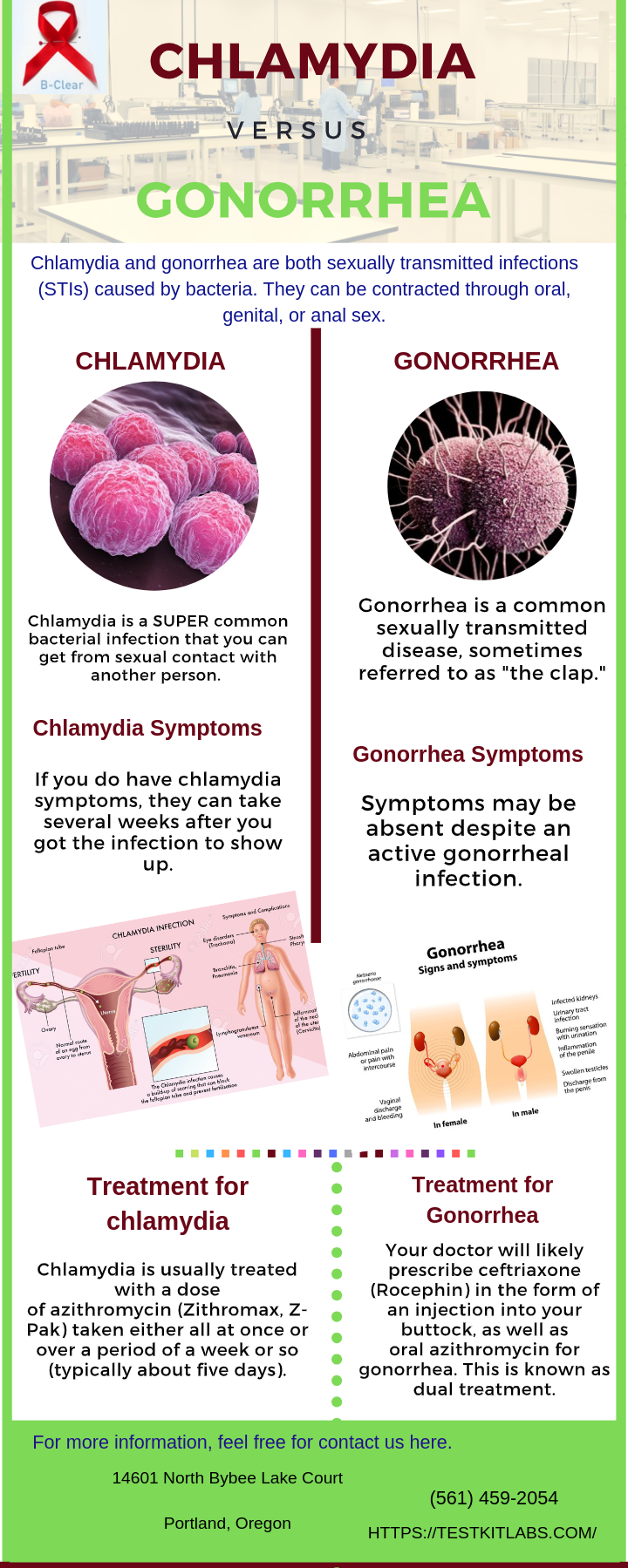 Urogenital chlamydia has manifestations of inflammatory diseases: urethritis, prostatitis, cystitis, vulvovaginitis, cervicitis, erosion, endometritis and is detected only by specific diagnostic methods. A characteristic symptom is glassy discharge from the urinary tract. Chlamydial infections are dangerous with multiple complications, including ascending urinary tract infections, infertility, neurochlamydia, joint damage, heart and vascular disease, and impotence in men.
Urogenital chlamydia has manifestations of inflammatory diseases: urethritis, prostatitis, cystitis, vulvovaginitis, cervicitis, erosion, endometritis and is detected only by specific diagnostic methods. A characteristic symptom is glassy discharge from the urinary tract. Chlamydial infections are dangerous with multiple complications, including ascending urinary tract infections, infertility, neurochlamydia, joint damage, heart and vascular disease, and impotence in men.
Urogenital (urogenital) chlamydia is a sexually transmitted infection caused by Chlamydia trachomatis. The problem of urogenital chlamydia is very acute today. In recent years, an increase in chlamydia has been observed both among the sexually active adult population (men and women from 20 to 40 years old) and among adolescents. Early sexual relations, unprotected sex with casual partners, lack of awareness of the possible consequences of such relationships put chlamydia in one of the first places in the list of sexual infections. Almost 9 people are infected with chlamydia every year.0 million people. Individuals with reduced immunity are especially susceptible to chlamydia. In 40% of cases, chlamydial infection causes various gynecological diseases, in 50% – tubal-peritoneal infertility. Often chlamydia is combined with other sexually transmitted infections: gardnerellosis, ureaplasmosis, trichomoniasis, gonorrhea, syphilis, mycoplasmosis, thrush. The combination of several infections aggravate the course of each other and lengthen the treatment. Women are more susceptible to chlamydia.
Almost 9 people are infected with chlamydia every year.0 million people. Individuals with reduced immunity are especially susceptible to chlamydia. In 40% of cases, chlamydial infection causes various gynecological diseases, in 50% – tubal-peritoneal infertility. Often chlamydia is combined with other sexually transmitted infections: gardnerellosis, ureaplasmosis, trichomoniasis, gonorrhea, syphilis, mycoplasmosis, thrush. The combination of several infections aggravate the course of each other and lengthen the treatment. Women are more susceptible to chlamydia.
Symptoms of chlamydia
Asymptomatic course of chlamydia occurs in 67% of women and 46% of men, which often complicates its diagnosis and treatment, increases the risk of complications. Even with a latent course of chlamydia, a sick person is potentially dangerous and is able to infect his sexual partner. Usually the first clinical manifestations of chlamydia occur 7-14 days after sexual infection.
Men develop mucopurulent or watery discharge from the urethra, itching and burning during urination. There is swelling and redness of the external opening of the urethra. Gradually, the symptoms subside, the discharge is observed only in the morning. The acute phase of chlamydia is replaced by a chronic one with damage to the urethra.
In women, chlamydia is manifested by pathological vaginal discharge of a mucous or mucopurulent nature, yellowish in color, with an odor. Sometimes the discharge is accompanied by itching, burning, low temperature, abdominal pain.
Complications of chlamydia
Urogenital complications of chlamydia in men are chlamydial prostatitis, urethritis, epididymitis.
- prostatitis develops when the prostate is involved in the infectious process. Chlamydial prostatitis is accompanied by discomfort and pain in the lower back, rectum, perineum, slight mucous or watery discharge from the urethra, difficulty urinating, impaired potency;
- urethritis occurs with damage to the urethra and is characterized by itching in the urethra, frequent painful urge to urinate, mucopurulent discharge.
 Chronic urethritis caused by chlamydia leads to urethral stricture;
Chronic urethritis caused by chlamydia leads to urethral stricture; - epididymitis develops with inflammation of the epididymis, which is accompanied by high fever, swelling and redness of the scrotum, an increase in the epididymis.
Urogenital complications of chlamydia are fraught for men with impaired spermatogenesis and infertility.
Chlamydia is no less dangerous for women, causing various lesions of the female reproductive system. The ascent of chlamydial infection through the genital tract can cause inflammatory changes in:
- cervix – endocervicitis. Chlamydia increases the risk of developing tumor processes in the cervix;
- mucous membrane of the uterine cavity – endometritis;
- fallopian (uterine) tubes – salpingitis;
- uterine appendages – salpingoophoritis.
Inflammatory processes of the uterus and uterine appendages with subsequent formation of adhesions and scars in the fallopian tubes cause tubal infertility, ectopic pregnancy, spontaneous abortion.
Other consequences of chlamydia in men and women can be inflammation of the pharynx, rectum, kidneys, joints, lungs, bronchi, etc. One of the serious complications of chlamydia is Reiter’s disease, characterized by a triad of clinical manifestations: conjunctivitis, urethritis, arthritis. Re-infection with chlamydia significantly increases the risk of complications.
Of particular danger is chlamydia in newborns, which occurs as a result of infection of a child from a sick mother during childbirth. The main forms of congenital chlamydia are:
- chlamydial conjunctivitis (ophthalmochlamydia) – inflammation of the mucous membrane of the eyes
- generalized form of chlamydia – damage to the heart, lungs, liver, digestive tract
- encephalopathy with convulsions and respiratory arrest
- chlamydial pneumonia is an extremely severe form of pneumonia with a high mortality rate.
Diagnosis of chlamydia
Diagnosis of chlamydia in men is often performed by urologists. A visit to a venereologist is necessary to exclude other STIs that the patient could have contracted along with chlamydia. Women need a consultation with a gynecologist.
A visit to a venereologist is necessary to exclude other STIs that the patient could have contracted along with chlamydia. Women need a consultation with a gynecologist.
Treatment of chlamydia
As in the treatment of any bacterial infection, antibacterial drugs are used for chlamydia. Since the causative agent of chlamydia Chlamydia trachomatis is a parasitic intracellular microorganism, the choice of antibiotics is limited to those drugs that penetrate the cells. These drugs include macrolide antibiotics, tetracyclines, and fluoroquinolones. When selecting antibiotics, the presence of a mixed infection (mycoplasma, gardnerella, ureaplasma) is taken into account for their simultaneous treatment.
In addition to the antibiotic, the treatment regimen for chlamydia includes immunomodulators (viferon, cycloferon), antifungal drugs (nystatin, flucostat), multivitamins, enzymes (mezim), bacteriophages (coliphage, interstibacteriophage, staphylococcal, proteic), probiotics (acylact, bifi dumbacterin , colibacterin), physiotherapy (ultrasound therapy, magnetotherapy, iontophoresis and electrophoresis with medicinal substances).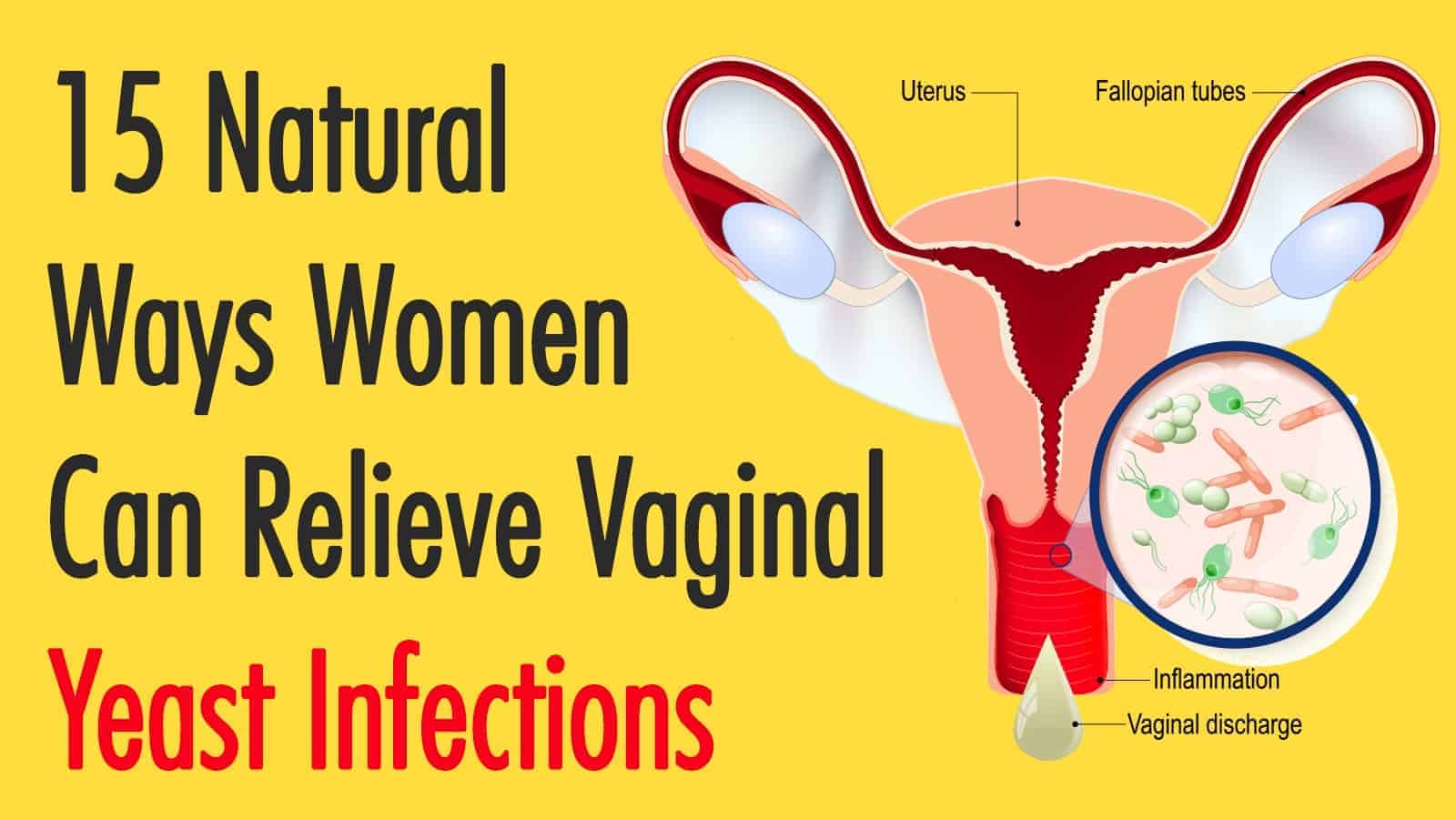



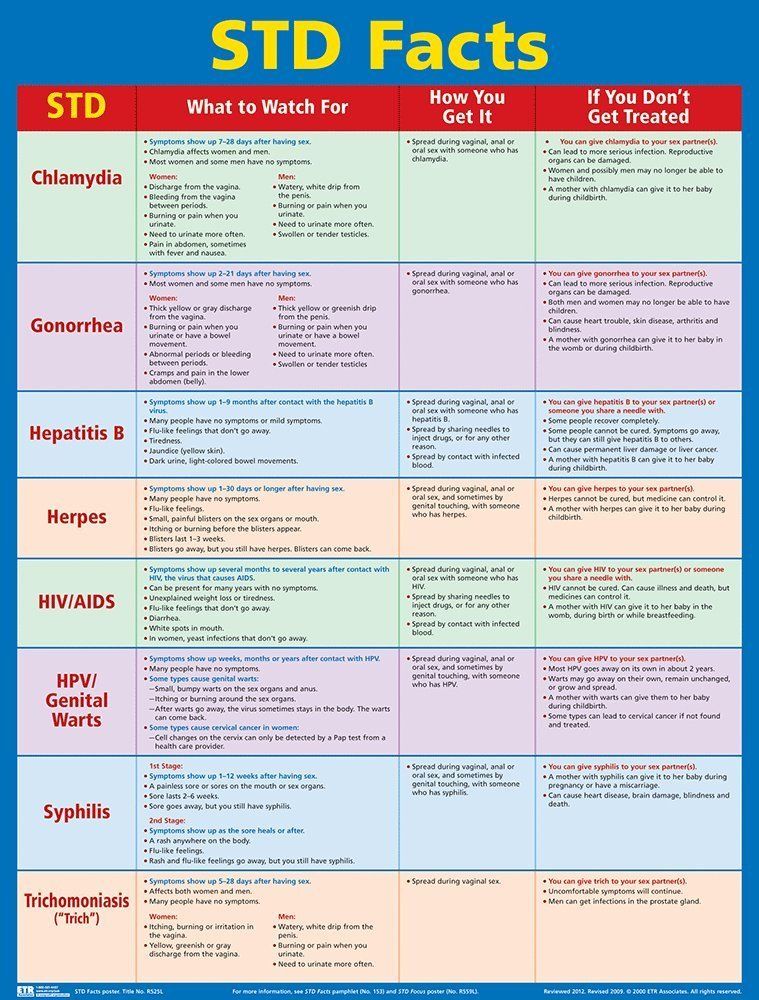 Chronic urethritis caused by chlamydia leads to urethral stricture;
Chronic urethritis caused by chlamydia leads to urethral stricture;